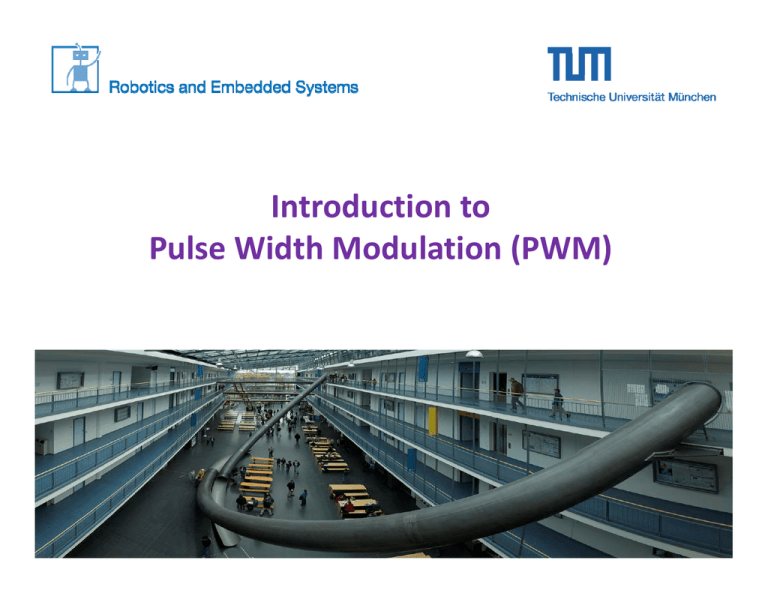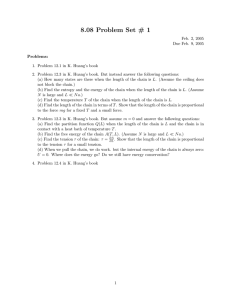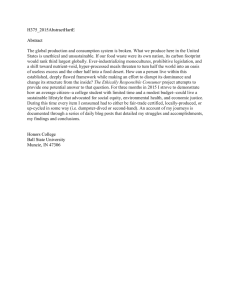Introduction to Pulse Width Modulation (PWM)
advertisement

Introduction to Pulse Width Modulation (PWM) What is PWM? Duty cycle = 20% on off Duty cycle = 50% on off Width period Depending on the requirement the width of the pulse is modulated (adjusted). Duty cycle = ton / (ton + toff). 1/27/2014 Kai.Huang@tum 2 Why PWM? Maximum voltage 100 % 75 % 50 % t Analog voltage control: o Voltage can be changed to control the motor speed o Can NIOS change voltage ? 1/27/2014 Kai.Huang@tum 3 Why PWM? 1 = 50 % 0 t t Analog control Digital control Digital voltage control: o Can only control ‘1’ and ‘0’ o X% of maximum analog voltage = X% of duty cycle 1/27/2014 Kai.Huang@tum 4 PWM Control Example Disco gate: o 100 % open gate = 10 persons per second o 50% open gate = 5 persons per second Analog control: o Open 50 % gate o Total how many people can go in 10 seconds? Digital control: o Open 100 % gate on every odd second (1,3,5,7,9, ..) o Total how many people can go in 10 seconds? 1/27/2014 Kai.Huang@tum 5 Usage of PWM Motor Control Intensity of LED 1/27/2014 Kai.Huang@tum 6 How to generate PWM signal ? Software method o Using counter • Count to 100 in a loop • Set the output value to 1 in the beginning of the loop • Set the output value to 0 as soon as the counter reaches the value of required duty cycle. • Continue the process o Using interrupt • Home work • Think about the concept 1/27/2014 Kai.Huang@tum 7 Your tasks Create projects in a usual way using provided SOF and SOPCINFO file. Type the code in your application project. Change duty cycle variable and observe the effect LED, and test it on the car. 1/27/2014 Kai.Huang@tum 8 Licenses You will get such message when you open the SOF file o Click OK 1/27/2014 Kai.Huang@tum 9 Licenses After programming the FPGA, you will get this warning o DO NOT click cancel 1/27/2014 Kai.Huang@tum 10



